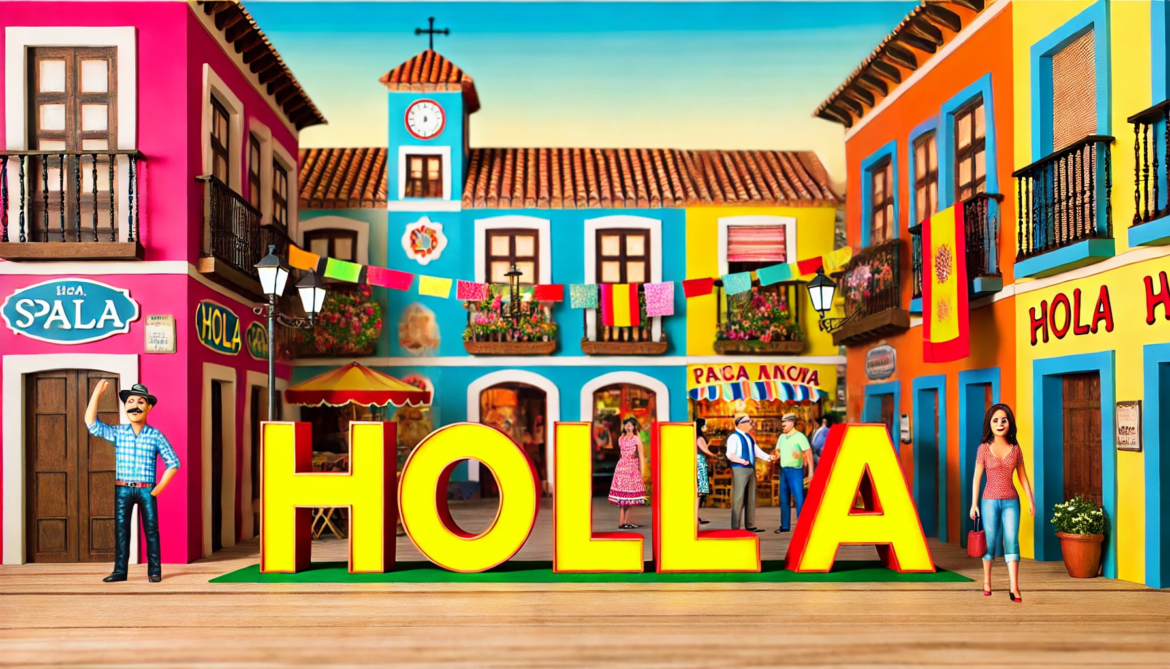Hello is the very first conversation word which gives initiation to maintaining a relationship. For Spanish speaking cultures, greetings are very important in our daily coexistence and reflect friendship or respect. What are you looking for “how to say hi in Spanish” then this is the correct place? This article goes over many of the common ways people greet each other in Spanish, discussing exactly what they mean and how different types convey difference meanings before diving into culturally-specific elements at play.
How do you say hi in Spanish : Greetings and conversations
Salutations are the opening move toward striking conversations and establishing friendships. The greetings allude to a part of Spanish-speaking cultures where receiving or giving someone else with their greeting is an expected social courtesy due and given. You have found the place to learn HI in Spanish. In thisarticle will explore different ways to greet someone in Spanish as well asthe cultural importance of these greetings, and give some effective advice onhow you can learn how to use them.
To Saying “Hi” in Spanish: Common Greetings
How to SayHello in SpanishThe most popular greeting is hola. It is a plain, yet robust word that transcends all Spanish-speaking countries.
“Hola” – The Universal Greeting
Hola is Hi in Spanish. It is a universal greeting that works in all formal and informal situations. This word is pretty simple to remember – it sounds like Ohlah… and you can use it at all hours of the day!
Examples:
- Hola, ¿cómo estás? (Hi, how are you?)
- Hola, buenos días. (Hi, good morning.)
Informal Greetings
Many other words are used as informal greetings when you speak Spanish among with less formality than “hola”.
“¿Qué tal?”
It means What’s up, y’all (well sorta… that phrase combined with this word) Pronounced “keh tal” or “How’s it going?” It is a casual and colloquial way to meet anyone, mostly friends or of the same age than us.
Examples:
- ¡Hola! ¿Qué tal? (Hi! What’s up?)
- ¿Qué tal tu día? (How’s your day?)
“¿Cómo estás?”
Or the ubiquitous, ¿Cómo estás? which means “How are you?” It is very ‘conversational, simply pronounced: koh-mo eh-STAS.
Examples:
- Hola, ¿cómo estás? (Hi, how are you?)
- ¿Cómo estás hoy? (How are you today?)
Formal Greetings
In formal times such as business meeting or speaking with an older person a powerful man, it is necessary to use the formality of greeting.
“Buenos días,´´ “ Buenas tardes” y Buenos noches ´´
Good morning your greetings associated with Morning0 chapite 1… GoodAfterNoon [minute-30]chapitevecchine, madhyarnam to meedha chellindhi Noone O:O []chapiteshuruva4.
- Buenos días (Good morning) – pronounced bwe-nos DEE-as, used from the early hours of the day until noon.
- Buenas tardes Good afternoon (bwe-naz TAR-dayz)** This is a formal way of saying good after from later morning through early evening.
- Buenas noches (Good evening/night) – pronounced “bwe-nas NOH-ches”, said in the afternoon and night or as a farewell.
Examples:
- (Hola, Mr. García: Buen día) Good morning, Mr. García.
- Buenas tardes ¿como esta usted? Good Afternoon (inaudible) ** – formal)
- Buenas noches, que descanse. (Good night, rest well.)
“¿Cómo está usted?
The formal way to say “how are you?” is “¿Cómo está usted?” It respectably means “koh-moh eh-STAH oo-STAID.”
Examples:
- Buenas tardes, ¿cómo está usted? (Good afternoon, how are you?)
- ¿Cómo está usted, doctor? (How are you, doctor?)
Language and Greetings
Learning the meaning of greetings in terms of a culture where you are saying “hi in Spanish,” is fundamental. In Spanish-speaking countries one would expect to come across handshakes, hugs and kiss-on-cheeks while greeting.
Physical Gestures
- Handshakes – This is one of the most common greetings and it typically only happens if you are meeting someone for the first time or in a more formal environment.
- Hugs and Cheek Kisses – Most of the time among friends or family members. In some countries the number of kisses depends on them (for example 1 in mexico or 2 in spain)
Respect and Politeness
This is how it should be, that the correct amount of formality should always be used. Using usted is also a sign of respect and it takes place mainly with olders or in professional topics.
Other Handy Phrases You Should Add to Your Vocabulary
Get some practice saying hi in Spanish and then move on to learn other very common phrases for various situations.
Casual Phrases
- ¡Hola a todos! (Hi everyone!)
- ¿Qué hay de nuevo? (What’s new?)
Friendly Phrases
- ¡Qué gusto verte! (Nice to see you!)
- ¡Hola, amigo/amiga! (Hi, friend!)
Professional Phrases
- Es un placer conocerte/conocerle. (It’s a pleasure to meet you – informal/formal.)
- Saludos cordiales. (Best regards.)
4 Tips for Using Greetings
999+ Words To leave a good first impression and to succeed communicating, consider the following when using Spanish greetings:
1. Observe and Mimic
Listen to the way people greet others and try reproducing that intonation with proper gestures. It will made you express like us.
2. Be Aware of Context
Remember to take into account your context and whether this is a new or established relationship. Select the right degree of formality to show respect and politeness
3. Practice Regularly
Practice makes perfect. Choose a word and start using it in your conversations whether with friends, classmates or language buddies.
4. Smile and Be Warm
A smile can go a long way. Add a warm smile to your greeting for an added positive experience.
FAQs (Frequently Asked Questions):
How to say hi in Spanish most frequently
So how do you say “hi in Spanish”? It is universally recognized and utilized in all of the Spanish speaking countries
Can I use “hola” in formal and informal way?
The multipurpose “hola” works just fine in formal as well informal context. But in more formal circumstances, it is often immediately followed by a much more polite greeting such as “Buenos días” or ‘¿Cómo está usted?’
How to Greet in Spanish informally X Ways?
A more informal way of greeting someone would be “¿Qué tal?” (What’s up?) and “¿Cómo estás?” (How are you?). Which are frequently utilized by friends seinem Kreis
How To Say Hello in Spanish- Formal Form?
Good morning (buenos días), Goodafternoon (buens tardes) and good evening/night( Buenas noches) are considered to be formal form of greetings. Also, Don´t use: ¿How are you? Or How do you feel. instead of “¿Cómo estás?” shows respect.
Are there any physical gestures connected with Spanish greetings?
Yes, greetings in Spanish-speaking cultures often carry with them the use of physical gestures such as handshakes and even hugs or cheek kisses. In some countries, it can be normal to do so even 3 times a kiss!
Do you have to start with a formal greeting when emailing someone in business?
Maybe this is true in a business environment as using formal greetings does show respect and politeness. Referring to someone as usted instead of tú is also crucial in keeping the conversation respectful.
Conclusion
Saying “hi in Spanish” is about more than knowing the word. This is a quick guide to the greetings of different cultures – where and why they came from so you can understand their meaning. Whether you’re dropping a casual hola or opting for more formally-appropriate buenos días, quick & simple Spanish greetings are essential in connecting with fellow people and making sure they know you respect them. Practice regularly and learn the cultural importance of these greetings you can improve your communication skills communicate more effectively in Spanish-language settings.




